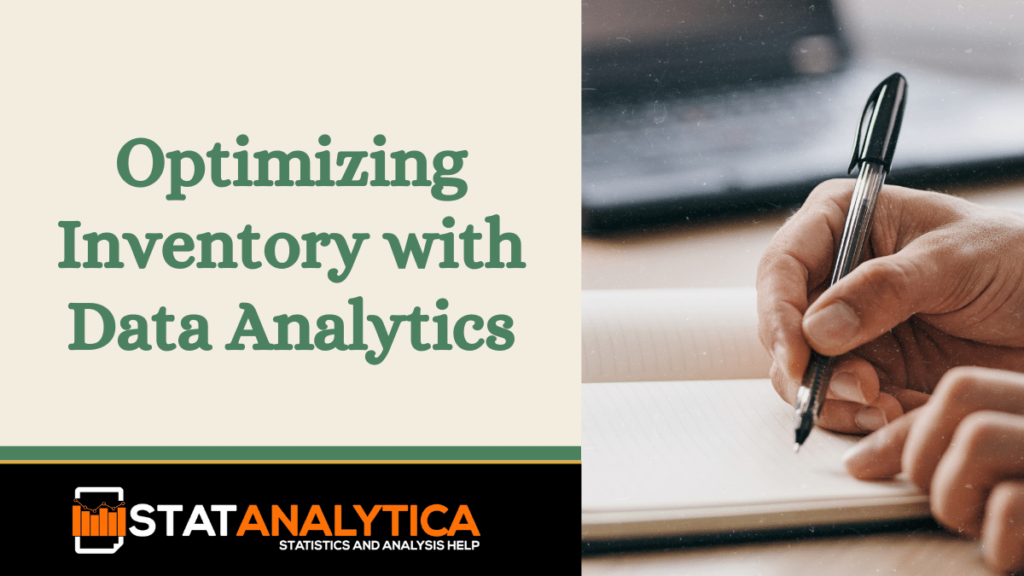Inventory management, logistics, and fulfillment operations can be challenging to perform for even the largest of organizations. Whether we’re talking about retailers that need to ensure stock levels are kept within certain parameters, or healthcare teams tasked with making sure medication is stored correctly, real-time insights regarding inventory have become essential.
However, while most modern organizations understand the importance of effectively optimizing inventory management, a surprising number don’t commit sufficient resources to this pursuit. Data suggests as many as 43% of small businesses don’t track their inventory at all, leading to 34% of businesses accidentally selling unavailable items to paying customers and clients.
Couple these problems with external factors like global supply chain issues, and it becomes clear that poorly optimized inventory solutions can cause significant troubles for businesses. So, how can modern organizations better protect themselves from inventory-related issues?
In many cases, by optimizing inventory management with support from smart data analytics.
What are inventory analytics?
Table of Contents
When businesses talk about inventory analytics, leaders are typically referring to the tools and technologies they use to monitor the movement of physical assets as they travel through the supply chain. When stored and processed intelligently, the data collected by these tools can be used to adjust inventory operations with both cost efficiency and productivity in mind.
In a general sense, the primary purpose of inventory analytics is to mitigate the risks faced by businesses reliant on global supply chains. By improving the accuracy of forecasting with support from reliable data, leaders can measurably reduce the impact of common challenges like stockouts, overstocking, and fulfillment delays, improving general operational efficiencies.
Why choose to optimize inventory management?
Given the competitive nature of modern commerce, businesses of all sizes are always looking for ways to gain an advantage over their rivals. Typically, the most reliable way to achieve this is to invest in systems able to improve the efficiency of essential operations.
Developing well-calibrated inventory analytics systems, informed by high-quality data from multiple relevant sources, removes almost all of the guesswork previously associated with large-scale inventory management operations. Helping teams to better meet client demands.
By optimizing inventory with data analytics, businesses can pursue the following benefits:
Operating cost reductions
By accurately forecasting demand with support from reliable data sources, teams can reduce the risk of overspending on multiple aspects of their operations. The key insights provided by data analytics systems help businesses schedule appropriate numbers of workers, order required amounts of stock, and plan machine downtime effectively to reduce most core costs.
Less chance of stockouts
The demand for many different types of products can change in response to multiple factors, from fairly predictable seasonal demand to unforeseen trends and global events. Optimizing inventory management with data analytics helps teams to better predict such occurrences by continuously analyzing data from multiple sources. This raises the likelihood that businesses will have sufficient inventory levels to meet projected demands, protecting against stockouts.
Faster fulfillment processes
When companies choose to optimize their inventory management systems with support from real-time data analytics, teams can dramatically improve fulfillment times. Customer location data can be used to find warehouses nearest to their addresses, enabling teams to expedite the fulfillment process and find the most efficient delivery route to best meet client demands.
Fewer supply chain issues
Data analytics systems can help organizations predict and prevent supply chain issues, enabling teams to adapt operations as soon as possible to mitigate potential losses. This aspect of inventory optimization is one of the driving factors behind the adoption of smart data analytics tools in commerce, with 72% of retailers said to be pursuing such initiatives.
Data analytics use cases for inventory optimization
Data analytics tools and data-informed processes are commonly applied to multiple aspects of commercial inventory management systems. Any essential process that may be affected by changeable factors can be optimized via the deployment of such tools, examples include:
Demand forecasting
Data analytics tools can be used to review and cross-reference multiple data sources to help organizations better understand projected demand. Tools can automatically compare historic sales data with emerging trends, logistical data, and current supply chain information, helping teams secure needed raw materials and saleable items far in advance of surges in demand.
Inventory shrinkage
In 2019, inventory shrinkage alone cost the US retail industry almost $47 billion. By using data analytics tools to monitor inventory management systems, teams can ensure that actual inventory levels always match internal databases. Alerts can be set up to warn stakeholders of discrepancies, helping leaders to investigate issues promptly and reduce potential losses.
Profitability analysis
Data analytics tools can also be used to accurately predict the profitability of specific items. Methodologies like ABC analysis can be used to review sales data alongside wider sources to compare the projected popularity of certain products. Integrating these calculations into existing commerce operations enables businesses to prioritize their most profitable products.
Summary
Ensuring inventory management systems run as efficiently as possible is central to business success, especially in competitive markets that may be susceptible to modern supply chain issues. Proactive organizations can protect themselves from instability and improve general operations by optimizing inventory with data analytics, helping teams maximize efficiency.


